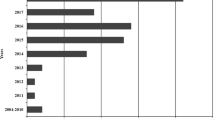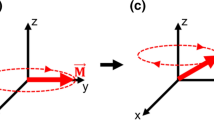Abstract
Using a novel concentration technique (reverse osmosis and freeze-drying) as well as a standard analytical technique little used with limnological samples (solid state 13C nuclear magnetic resonance), we studied the chemical structure of aquatic organic matter from four closely located freshwater sites in Nova Scotia. The main conclusions drawn from the data are that: (a) the aromatic C fraction which is assumed to be refractory remains at less than 10% of the total, with a slight increase in relative importance in the fall, (b) less structurally complex aliphatic carbon decreases from winter to spring and remains at lower levels into later fall, (c) carbohydrates are at a maximum during the summer, (d) the carboxylic C fraction is at a minimum in the summer and maximum in the fall and winter. Results show roughly the same annual patterns of C composition for the two running water sites. Our data suggest that the hydrological processes which carry terrestrial and wetland DOM to streams and lakes allow a selective adsorption process of DOM to occur in soils. We compare our data to those from other freshwater studies and suggest that the importance of aromatic carbon in freshwaters has probably been overestimated in the past, with a corresponding underestimate of the more biologically labile carbohydrate and aliphatic material.
Similar content being viewed by others
References
Anonymous, 1984. NAQUADAT dictionary of analytical parameter codes. Water Quality Branch, Environment Canada, Ottawa, 319 pp.
Buffle, J., 1988. Complexation reactions in aquatic systems: an analytical approach. Ellis-Horwood Ltd. Chichester, 692 pp.
Clair, T. A., 1991. Diagenesis and transformation of aquatic dissolved organic matter in Nova Scotia freshwaters. McMaster University, Ph.D. thesis, 176 pp.
Clair, T. A. & V. Komadina, 1984. Aluminum speciation in waters of Nova Scotia and its impact on Environment Canada analytical and field methods. Tech. Rep. IWD-AR-WQB-84–69, Environment Canada, Moncton, N.B., 28 pp.
Clair, T. A. & B. Freedman, 1986. Patterns and importance of dissolved organic carbon in four acidic brownwater streams in Nova Scotia, Canada. Wat. Air Soil Pollut. 31: 139–147.
Clair, T. A., F. Baerlocher, P. Brassard & J. R. Kramer, 1989. Chemical and microbial diagenesis of humic matter in freshwaters, Wat. Air Soil Pollut. 46: 205–211.
Clair, T. A., M. Sydor, J. R. Kramer & D. Eaton, 1991. Concentration of aquatic dissolved organic matter by reverse osmosis. Wat. Res. 25: 1033–1037.
Cronan, C. S., 1985. Chemical weathering and solution chemistry in acid forest soils: differential influence of soil type, biotic processes, and H+ deposition. from: J. I. Drever (ed.), The chemistry of weathering. D. Reidel Pub. Co.: 175–195.
Eckhardt, B. W. & T. R. Moore, 1990. Controls on dissolved organic carbon concentrations in streams, southern Québec. Can. J. Fish. aquat. Sci. 47: 1537–1544.
Ehrman, J. M., G. D. Howell, S. Roussel & T. A. Clair, 1993. Summary of biophysical and water chemistry for 108 lakes in the Environment Canada Atlantic Region acid deposition network. Tech Rep. WRD-AR-MEB-93–180, Environment Canada, Moncton, N.B. E1E 1E1, 228 pp.
Eshleman, K. N. & H. F. Hemond, 1985. The role of organic acids in the acid-base status of surface waters at Bickford watershed, Massachusetts. Wat. Resour. Res. 21: 1503–1510.
Hessen, D. O., T. Andersen & A. Lyche, 1990. Carbon metabolism in a humic lake: pool sizes and cycling through zooplankton. Limnol. Oceanogr. 35: 84–99.
Kerekes, J., G. Howell, S. Beauchamps & T. L. Pollock, 1982. Characterization of three lake basins sensitive to acid precipitation in Central Nova Scotia. Int. Revue ges. Hydrobiol. 67: 679–694.
Kerekes, J., S. Beauchamp, R. Tordon, C. Tremblay & T. L. Pollock, 1986. Organic versus anthropogenic acidity in tributaries of the Kejimkujik watersheds in western Nova Scotia. War. Air Soil Pollut. 31: 165–173.
Leenheer, J. A., 1981. Comprehensive approach to preparative isolation and fractionation of dissolved organic carbon from natural waters and wastewaters. Envir. Sci. Technol. 15: 578–587.
Malcolm, R. L., 1976. Method and importance of obtaining humic and fulvic acids of high purity. J. Res. U.S. Geol. Surv. 4: 37–40.
Malcolm, R. L., 1989. Applications of solid-state 13C NMR spectroscopy to geochemical studies of humic substances. In: M. H. B. Hayes, P. MacCarthy, R. L. Malcolm & R. S. Swift (eds), Humic Substances II. J. Wiley & Sons: 339–372.
Meybeck, M., 1982. Carbon, nitrogen and phosphorus transport by world rivers. Am. J. Sci. 282: 401–450.
Moran, M. A. & R. E. Hodson, 1990. Bacterial production on humic and non-humic components of dissolved organic carbon. Limnol. Oceanogr. 35: 1744–1756.
Oliver, B. G. & S. A. Visser, 1980. Chloroform production from the chlorination of aquatic humic material: the effect of molecular weight, environment and season. Wat. Res. 14: 1137–1141.
Perdue, E. M., 1984. Analytical constraints on structural features of humic substances. Geochim. Cosmochim. Acta 48: 1435–1442.
Preston, C. M. & M. Schnitzer, 1984. Effects of chemical modification and extractants on the carbon-13 NMR spectra of humic materials. Soil Sci. Soc. am. J. 48: 305–311.
Preston, C. M., P. Sollins & B. G. Sayer, 1990. Changes in organic components for fallen logs in old-growth Douglas-fir forests monitored by 13C nuclear magnetic resonance spectroscopy. Can. J. For. Res. 20: 1382–1391.
Schnitzer, M. & S. U. Khan, 1972. Humic substances in the environment. Marcel Dekker, 327 pp.
Sedlacek, J., T. Kallqvist & E. Gjessing, 1983. Effect of aquatic humus on the uptake and toxicity of cadmium to Selenastrum capricornium. In Christman, R. F. & E. T. Gjessing (eds), Aquatic and terrestrial humic materials. Ann Arbor Science, Ann Arbor, MI: 495–516.
Serkiz, S. M. & E. M. Perdue, 1990. Isolation of dissolved organic matter from the Suwannee River using reverse osmosis. War. Res. 24: 911–916.
Stevenson, F. J., 1982. Humus chemistry; genesis, composition, reactions. Wiley-Interscience, N.Y., 443 pp.
Stuermer, D. H. & J. R. Payne, 1976. Investigation of seawater and terrestrial humic substances with carbon-13 and proton nuclear magnetic resonance. Geochim. Cosmochim. Acta 40: 1109–1114.
Thurman, E. M., 1985. Organic geochemistry of natural waters. Martinus Nijhoff/Dr W. Junk Publishers, Dordrecht, 497 pp.
Urban, N. R., E. Gorham, J. K. Underwood, F. B. Martin & J. G. Ogden III, 1990. Geochemical processes controlling concentrations of Al, Fe, and Mn in Nova Scotia lakes. Limnol. Oceanogr. 35: 1516–1534.
Wels, C., R. J. Cornett & B. D. Lazerte, 1990. Groundwater and wetland contributions to stream acidification: an isotopic analysis. Wat. Resour. Res. 26: 2993–3003.
Wershaw, R. L. & G. R. Aiken, 1985. Molecular size and weight measurements of humic substances. In: G. R. Aiken, D. M. McKnight, R. L. Wershaw & P. MacCarthy (eds), Humic substances in soil, sediment, and water. J. Wiley & Sons, N.Y.: 477–492.
Wilson, M. A., 1989. Solid-state nuclear magnetic resonance spectroscopy of humic substances: basic concepts and techniques. In: M. H. B. Hayes, P. MacCarthy, R. L. Malcolm & R. S. Swift (eds), Humic Substances II. J. Wiley & Sons: 309–338.
Author information
Authors and Affiliations
Additional information
Department of Chemistry, McMaster Universtiy
Rights and permissions
About this article
Cite this article
Claire, T.A., Sayer, B.G., Kramer, J.R. et al. Seasonal variation in the composition of aquatic organic matter in some Nova Scotian brownwaters: a nuclear magnetic resonance approach. Hydrobiologia 317, 141–150 (1996). https://doi.org/10.1007/BF00018737
Received:
Revised:
Accepted:
Issue Date:
DOI: https://doi.org/10.1007/BF00018737




